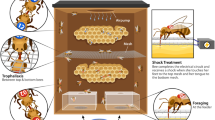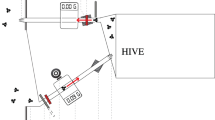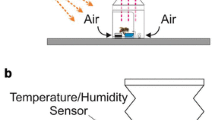Summary.
Forager bees that return from nectar sources transfer the gathered liquid to receiver hive mates through mouth-to-mouth contacts (trophallaxis). After returning from a nectar source, several trophallactic events of different lengths usually occur between the incoming forager and hive-mates. No unified criterion exists so far on the minimum time required for an effective food transfer to actually occur. By means of non-invasive thermographic recordings it was possible to observe that the warm nectar regurgitated by the returning donor forager heated up abruptly the proboscis of the recipient. By using this methodology, we analyzed the increase in the receiver's proboscis temperature as an indicator of effective food transfer between arriving donor foragers and receiver hive mates. Results show that under the present experimental conditions, all contacts lasting more than 3 seconds were effective food transfers, while most contacts lasting 2-3 s (87.5%) also showed liquid food transference. Moreover, even during contacts lasting 1-2 s it was possible for receiver bees to obtain samples of food via trophallaxis. Present results help define more accurately the minimum time required for an oral contact to allow effective food transfer.
Similar content being viewed by others
Author information
Authors and Affiliations
Additional information
Received 7 December 2000; revised 20 March and 6 July 2001; accepted 31 July 2001.
Rights and permissions
About this article
Cite this article
Farina, W., Wainselboim, A. Thermographic recordings show that honeybees may receive nectar from foragers even during short trophallactic contacts. Insectes soc. 48, 360–362 (2001). https://doi.org/10.1007/PL00001791
Issue Date:
DOI: https://doi.org/10.1007/PL00001791




